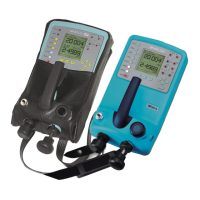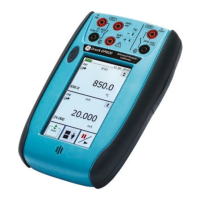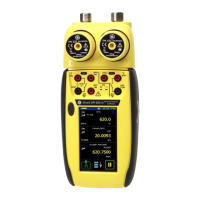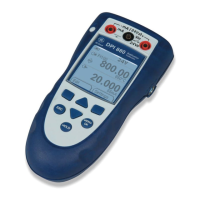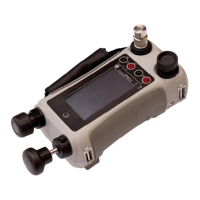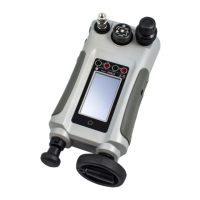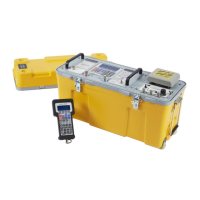K415 Issue No. 1 74
Method of Testing with Larger Volume Systems
Connect the device or external system under test to the calibrator and prepare
for test as detailed on Page 72.
Note: To apply a negative differential pressure, connect the tee piece (refer to
Figure B3), to the negative port and use the hand-pump to apply a positive
pressure to the negative port.
Close the vent valve (turn fully clockwise).
Zero the calibrator by pressing the ZERO key as in the sequence below:
CAUTION:TO AVOID THE APPLICATION OF TRANSIENT OVER-PRESSURE PULSES TO
SENSITIVE EXTERNAL SYSTEMS, SQUEEZE THE HAND-PUMP SLOWLY.
Close the pump valve and operate the hand-pump to pressurize or depressurize
the device or system under test to just above/below the required level.
Adjust the output pressure to the required level by using the volume adjuster as a
fine adjustment. Allow a short period for the pressure to stabilize before fine
trimming.
Note: The larger the external volume, the less effect the volume adjuster will have
on the output pressure.
Record the test result using either data log or snapshot facility as required.
Use the pump and volume adjuster to set-up any additional test pressures
required. The recommended method starts at 0, increasing to 10%, 25%, 50%,
75% and 100% full-scale and then decreasing to 75%, 50%, 25%, 10% and 0.
Record the results for each test pressure.
Note: To release the output pressure at any point during a test or series of tests,
open the vent valve. Allow a few seconds for the connected system to vent.
With larger volume systems connected, first disconnect both the reference
and positive pressure lines from the calibrator and then reconnect before
zeroing.
ZERO
TASK: P-DISPLAY
mbar
CHANGE
VALUE
TASK: P-DISPLAY
DISPLAY
DISPLAY
DISPLAY
24V OFF
mbar
YES
ZERO INTERNAL SENSOR ?
NO
24V OFF
mbar
PLEASE WAIT . . .
TASK: P-DISPLAY
24V OFF

